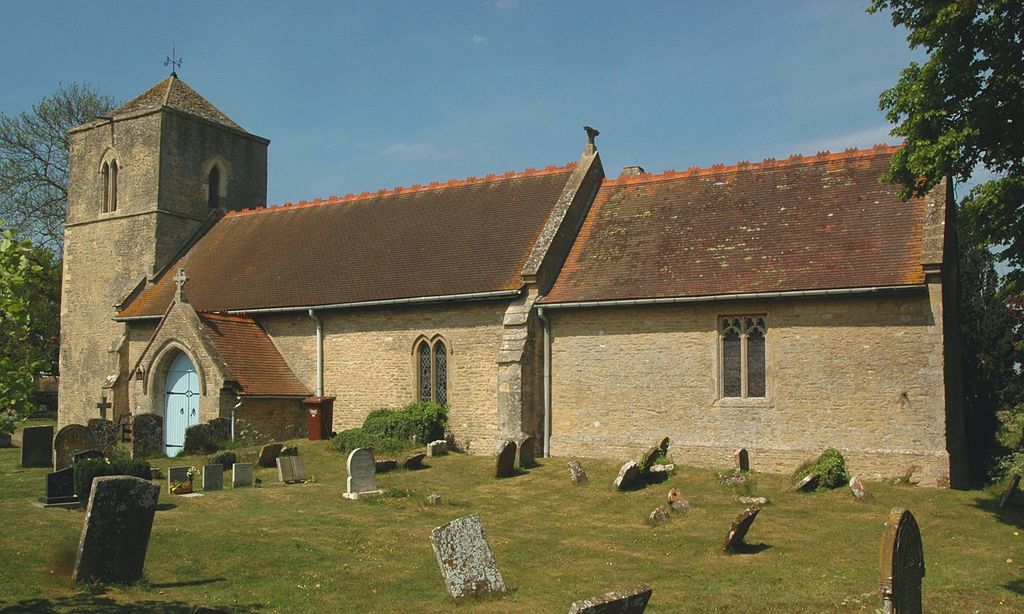Arthur Mee - The King's England, Oxfordshire.
Oddington – Maori Carving.
 Save the rooks in the treetops, all is quiet here on the border of Ot Moor. Its little grey church, with red roofs, has much that is new and something that is old. There is an ancient ladder reaching to the belfry under the pyramid roof of the 13th century tower, a font 700 years old with a very remarkable oak cover. It is formed by eight radiating arms rising in stages to a height of seven feet, and was made by a 17th or 18th century craftsman. There are a few old oak benches, and a Jacobean pulpit.
Save the rooks in the treetops, all is quiet here on the border of Ot Moor. Its little grey church, with red roofs, has much that is new and something that is old. There is an ancient ladder reaching to the belfry under the pyramid roof of the 13th century tower, a font 700 years old with a very remarkable oak cover. It is formed by eight radiating arms rising in stages to a height of seven feet, and was made by a 17th or 18th century craftsman. There are a few old oak benches, and a Jacobean pulpit.
The dim interior receives the golden light from a window of plain glass, and old glass in a chancel window adds a charming effect with its colours of red and gold. Very attractive it must all be at night, for it has candelabra with a hundred candles in them. Two curious possessions we found here, a rector’s brass engraved with a repellent skeleton, and a carved and coloured Pieta on a pedestal with Maori carvings in memory of the Maoris who died for us.
Something of the old cross remains in the churchyard, and in the middle of Ot Moor is what is called Joseph’s Stone, lying near the Roman road from Alchester to Dorchester. It is thought it may have been a Roman milestone.
W. Hobart Bird – Old Oxfordshire Churches.
The church is dedicated to St. Andrew. Note the remains of an ancient churchyard cross – the base and part of an octagonal pillar. The church has quire (rebuilt in 1821), nave of three bays, North aisle, South porch, and West tower with a plain parapet. It is good Early English of two stages. The sound-holes have parts of plain, tall lancets with bold roll label. The West window has a large trefoiled lancet. The doorway is good Early English, with single jamb-shafts having moulded capitals and bases and a roll-moulding (unusual). The rounded abaci are of rather rude work; the inner chamfered order of the arch continues to the floor. Above the abaci are two roll orders and a roll label. This is a very good example of Early English.
Note the Norman tub font, retaining its original fastenings for the oak cover, which is quite remarkable and original, and of a graceful design (possibly 17th cent).
The quire has a good Decorated piscina, cinquefoiled, with a projecting bowl, and an aumbry. The East window of three lights is Perpendicular, set in the jambs of a former Decorated one. There is a two-light Perpendicular on South, also set within Decorated jambs. On the floor are the remains of a “shroud” brass, which is most realistic and gruesome. There are great worms crawling out of the eyes, mouth, neck and other parts of the anatomy (R. Hamsterlay, M.A., ob. 1518).
The nave arcade is Decorated of three bays. All of the windows are Early English pairs of lancets in deep splays. On the West arch note the traces of contemporary red paintings. There is a good brass candelabrum, plain oak benches, and a Jacobean pulpit.